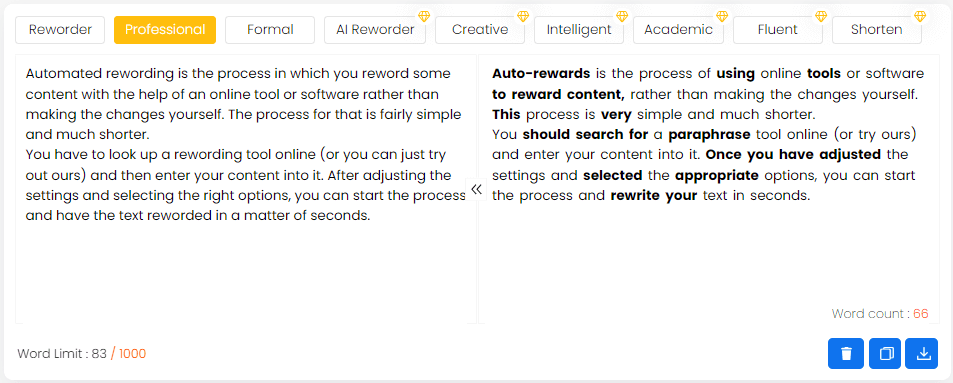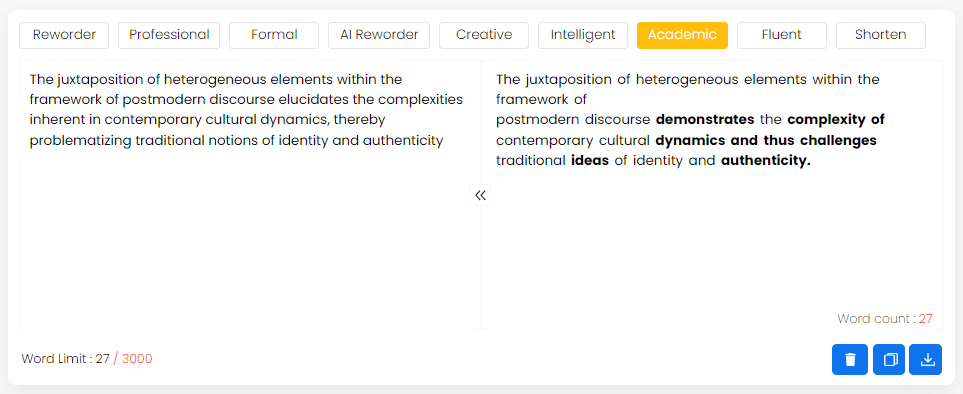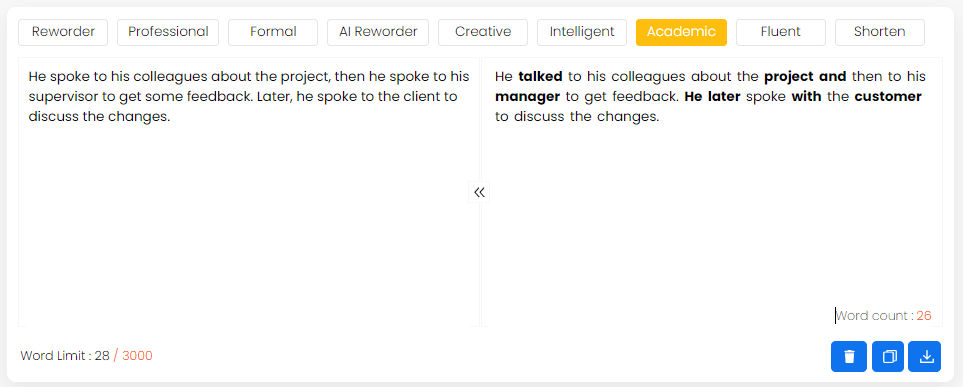
Rewording is a helpful technique that can be used by writers and editors for different purposes. In this guide, we want to provide you with all the important information that you need to properly understand about this technique. We will talk about how you can do it, why you should do it, and other similar aspects.
Let’s talk about the definition of rewording first.
Rewording is essentially the process of describing a piece of text using different words and phrases but without making any changes to its meaning.
Here are some examples of rewording to help you understand this better.
Example 1: There were many different people standing in front of the building’s doors.
Reworded version: There were many different individuals standing in front of the building’s entrance.
Example 2: Please hand me the papers.
Reworded version: Kindly hand me the documents.
You can reword a piece of text in a couple of different ways.
Let’s talk about manual rewording first.
Manual rewording is basically when you don’t take the help of any online tool or software to change the words and sentence arrangement of the text. You do it using your own skills and vocabulary, etc.
There are different benefits to rewording your content manually as compared to using tools. And there are also some benefits to using tools that aren’t present in the manual method.
We will talk about how both methods are done and then we will talk about the pros and cons.
Here are the steps that make up the process of manual rewording:
Automated rewording is the process in which you reword some content with the help of an online tool or software rather than making the changes yourself. The process for that is fairly simple and much shorter.
You have to look up an accurate rewording tool online and then enter your content into it. After adjusting the settings and selecting the right options, you can start the process and have the text reworded in a matter of seconds.
Here is what automated rewording looks like:

Here is a list of the upsides and downsides of manual and automated rewording.
Manual rewording | Automated rewording |
Allows you to have full control over the tone and style of the text | Allows you to choose from pre-set options to select the tone and style (more restricted) |
Takes time (a single page of text can take up to 10 minutes) | Is very quick (a single page of text can be reworded in less than 5 seconds) |
Has a lesser risk of errors and inaccuracies in the output | Requires proper proofreading to ensure zero errors |
Is reliant on the person’s level of skill | Runs on advanced AI technology for excellent results regardless of skill level |
There are different reasons that rewording is done on a piece of writing. Let’s take a look at some of the main benefits. Some of these benefits are achievable through automated rewording. Whereas some can be done by both manual and automated methods.
Often, the first draft may turn out to be difficult to read. It can happen quite frequently. But there is an easy fix to this problem.
Take your difficult-to-read content and put it through an AI-based rewording tool, the latter can make various changes to it so that it becomes easier and more pleasant to read.
Here is an example.

The AI-based reworder looks at the words and recognizes them. Then replace the words with easier synonyms to enhance readability.
Another benefit of rewording is that it is a good way to avoid plagiarism in your writing.
Plagiarism occurs when you copy or duplicate someone else's content. Writers face this problem, especially when they write in a popular and saturated niche. There might be a possibility that the phrase or sentence you’ve written can already exist on the internet. This is why writers even the honest ones have to check plagiarism in their content.
The plagiarism tool eliminates the affected parts of the content while the AI reworder helps in removing all instances of plagiarism from the content. The tool will change the wording of your content and all the traces of plagiarism will be eliminated.
Repetition in content can occur for various reasons, such as when you have to talk about the same type of stuff multiple times or when you don’t have a diverse vocabulary to shuffle things up.
In these sorts of situations, the words and phrases in the content are often repeated and it makes a really bad impression on the reader. Once again, rewording can be a good solution to this problem. That is, of course, rewording with online tools rather than manually.
With an online tool at hand, you will be able to make the wording in your content more diverse. Here is an example of how this can work out:

Rewording content is very easy and simple if you know which steps to follow. There are two different methods to do it, which include the manual method and the automated method.
As for the benefits of rewording, they are numerous. We have mentioned some of the main ones in detail above.
Hopefully, after reading this post, you have a good idea of what rewording is, how it is done, and how it benefits your writing.